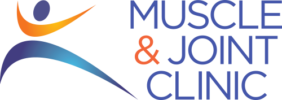Neck pain is the number three cause of chronic pain in the United States, affecting a whopping 45% of the nation’s workforce at some point in their lives.*
Neck Pain: Why You Get it
Your cervical spine, otherwise known as your neck, is a very delicate system of nerves, muscle, and vertebrae that houses your spinal cord. The spinal cord sends messages from the brain to control all parts of the body, inside and out. Your neck does all of that while remaining very flexible, allowing movement in all directions.
Neck pain usually starts like this:
- You go about your everyday activities, including texting, cooking, sitting at a desk, watching TV, driving, etc. – usually with little stretching or posture-based exercise.
- These activities get you used to sitting in what’s called “forward head” posture – shoulders hunched, back rounded, head jutting forward.
- This “forward head” posture eventually leads to muscle imbalance in the neck – stiff, overused, inflexible muscles in the front of the neck, and weak, underused, stretched muscles in the back of the neck.
This muscle imbalance, when left untreated, can progressively worsen and cause further dysfunction.
Neck Pain: A Total Body Problem
Once the muscle imbalance in the neck is set into motion, it’s only a matter of time before it starts a chain reaction in the rest of the body.
Neck pain leads to body pain:
- One of the most common problems that can result from your neck pain is tension headaches and migraines. Forward head posture can cause muscles in the neck and scalp to become tense, leading to severe, and sometimes chronic headaches.
- If your upper back rounds with your shoulders, you can prepare yourself for a multitude of back and shoulder problems. Degenerative joint disease, herniated discs, and rotator cuff tears are very real possibilities.

- You may not realize it, but forward head posture forces your body to tilt your hips forward as well to keep yourself upright. This leads to low back pain, hip inflexibility, and can create the illusion of a “pooch” in your lower stomach.
- If your head is forward and your hips tilt forward with it, you can add leg and foot pain to your list of problems as well. The displacement in your hips leads to you distributing weight unevenly between your legs. Resulting in further muscle imbalance and pain.
Fortunately, there are a number of ways to prevent your neck pain from becoming head-to-toe pain.
Neck Pain: Treatment
Muscle & Joint Clinic has a systematic, personalized approach to resolving your neck pain and alleviating muscle dysfunction. First, we obtain a deeper understanding of your specific neck pain by using computerized posture analysis and functional analysis. Combined with assessing underlying causes, such as day-to-day habits that may be contributing to your pain. Treatment focuses on restoring proper motion and establishing ideal posture by balancing muscles and ligaments. By releasing tight muscles, remobilizing joints, and correcting your posture, we can significantly reduce your neck pain now. While keeping it from returning in the future.
*Source: Neck Pain in the General Population (Spine, 1994)


